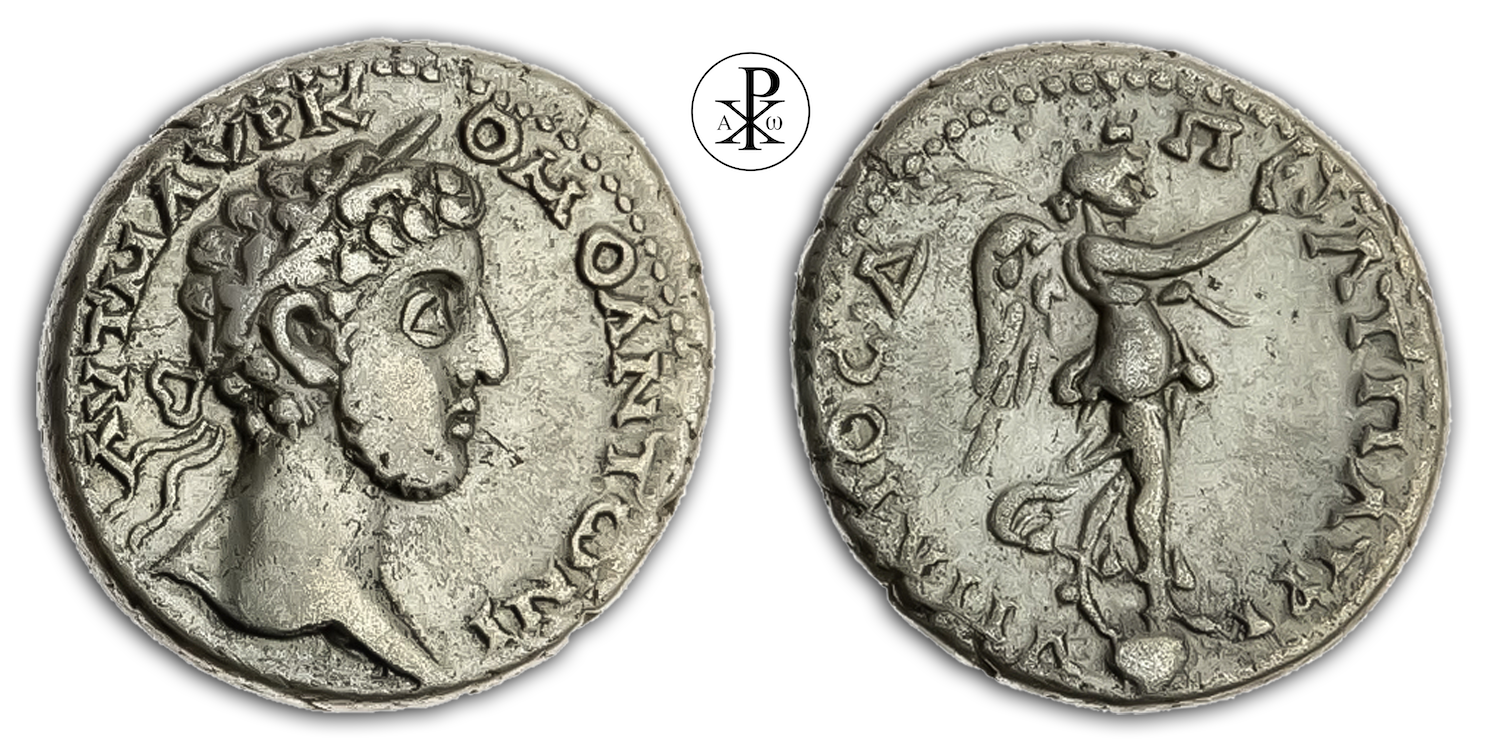Imperator Caesar Marcus Aurelius Commodus Antoninus Augustus
Reign: Commodus
Mint: Caesarea Eusebia, Cappadocia
Date: 183/185 AD
Nominal: Drachm
Material: Silver
Diameter: 18mm
Weight: 4.45g
Reference: RPC IV.3 7124
Reference: Metcalf 157d
RPC Online: https://rpc.ashmus.ox.ac.uk/coins/4/7124
Rare: Specimens 5 (2 in the core collections)
Provenance: SPINK Numismatics London, Great Britain (Auction 22180, Lot 701)
Pedigree: –
Obverse: Laureate head of Commodus right
Inscription: ΑΥΤ Μ ΑΥΡ ΚΟΜΟ ΑΝΤⲰΝΙ
Translation: Autokrator Marcos Aurelios Komodos Antouninos
Translation: Imperator Marcus Aurelius Commodus Antoninus
Reverse: Nike standing on globe, right, holding wreath and palm-branch
Inscription: ΥΠΑΤΟϹ Δ ΠΑΤ ΠΑΤΡΙ
Translation: Upatos Delta Pateras Patridos
Translation: Consul Quartum [Consul for the fourth time], Pater Patriae [Father of the Country]
Comment: Caesarea, named in honour of the Roman Emperor Tiberius; Greek Kaisareia, previously Mazaka or Eusebeia, is the capital of the province of the same name, Kayseri, in Cappadocia in Turkey. According to Strabon, the city was still unfortified and surrounded by predatory tribes in his time. The surrounding land was barren, sandy and stony, the city itself “waterless”. Numerous “fire pits” seem to have survived from the volcanic activity around Mount Argaeus at that time. Around 77 BC, the city was captured for the second time by the Armenian Great King Tigranes II, who once again had numerous inhabitants deported to his new capital Tigranokerta in northern Mesopotamia. Only after the conquest of this place by the Romans under Pompeius (69 BC) could the resettled population return. With the death of its last king Archelaos, Cappadocia lost its independence in 17 AD and was transformed into the Roman province of Cappadocia under Emperor Tiberius. Mazaka-Eusebeia now served as the provincial capital and was given the name Caesarea (Greek Kaisáreia). After the division of Cappadocia under Emperor Valens, Caesarea was the capital of Cappadocia prima.
